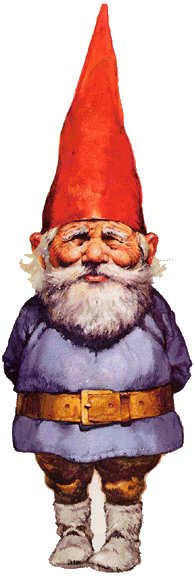The TOLKIEN
GALLERY
page SEVEN
 Dwarves... or Gnomes?
Dwarves... or Gnomes?
The picture is from Karl Gjellerup's book Den
Ældre Eddas Gudesange [The Divine Songs of the Elder
Eddas] Kalliope, Denmark, 1895 [re-released by Thaning and Appel, Copenhagen,
1973]; some call these figures 'gnomes'. [The background of stone work
is added by this author.]
The term gnome appears better
attributed to Paracelsus, where they are described as 'elementals' having
to do with the earth. This may have
led to confusion of the terms, since dwarves
are usually identified as 'soil dwelling dwarves' [the old Norse Eddas],
or below-ground stone and metal smiths [Tolkien].
Even the term gnome is not settled in its origins;
while some attribute it to the Greek gnome 'to know', others from
the Greek genomon 'one who knows', and by extension 'guardian' (of
treasure), yet others say Greek genomus 'earth dweller' [presumably
from
ge,
gaia 'earth' + nómos 'an allotted
abode'].
Mythologically Dwarves are believed to live in subterranean
halls, or mines, and guard great treasures. The term Dwarf
traces back to ancient Northern European roots [e.g.: Swedish dverg,
Old German twerg], but its origin is essentially unknown.

To the right is the contemporary view of a gnome
[by Rien
Poortvliet and Wil Huygen]. While it has some things in common
with Tolkien's Dwarves, the concept is actually
much
different. These beings were considered rather tiny, often
less than a foot in height. They are less frequently associated
with the earth and stone, and often associated with wild
animals and even farmsteads. By some accounts they are
considered 'deformed' dwarves.

Brian Froud and Alan Lee have depicted Dwarves
more in the vein of Tolkien, larger in
stature and more human-like, although
still bearded and aged. Dwarves are
usually described as less friendly to
human-kind than gnomes, but always
as craftsmen and smiths.
In the Norse Elder Eddas
the Dwarves
also fashion a beautiful necklace [in
The Silmarillion the Nauglamír]
and
a magical ring that forever creates wealth
for its possessor.
~
The names that Tolkien gave to his Dwarves
are taken from the ancient Norse Eddas.
In his early writings Tolkien used the term Gnomes
to describe a division of the Elves, but by the time of the publication
of The Lord of the Rings he had changed
the name to Noldor. The latter term derives
from an Elvish stem ÑGOL- 'wise' ... ÑGOLOD- 'one of the
wise folk' or 'Gnome', which in the High Elven tongue was 'Noldo', plural
'Noldor'. This leaves little doubt from whence Tolkien thought the term
'gnome' derived.
It is certainly generally true of early European mythologies
that usage of the terms gnome, dwarf
and elf were often interchanged or overlapped
one another.
Go to next Gallery page
Go to first
Gallery page
Return to the main
Dictionary page .
 Dwarves... or Gnomes?
Dwarves... or Gnomes?

